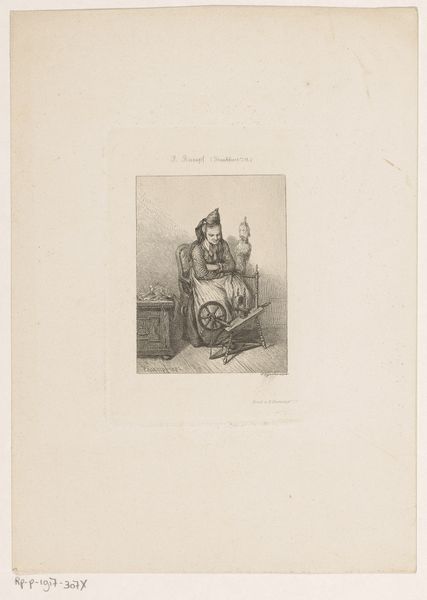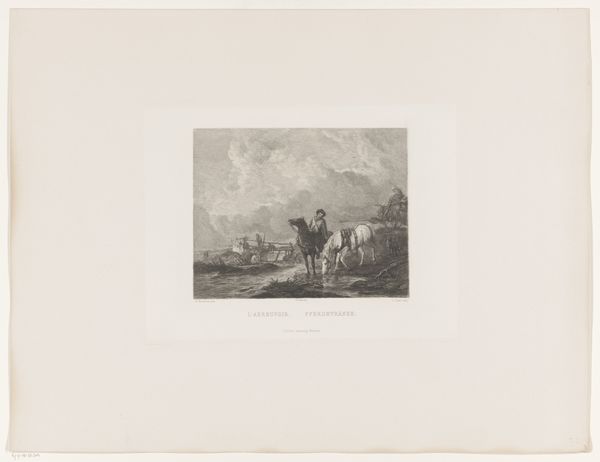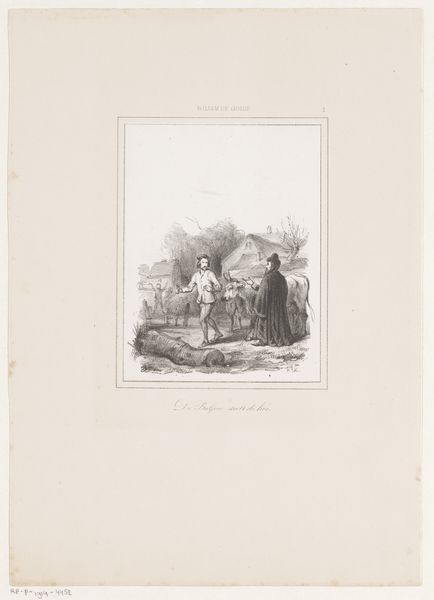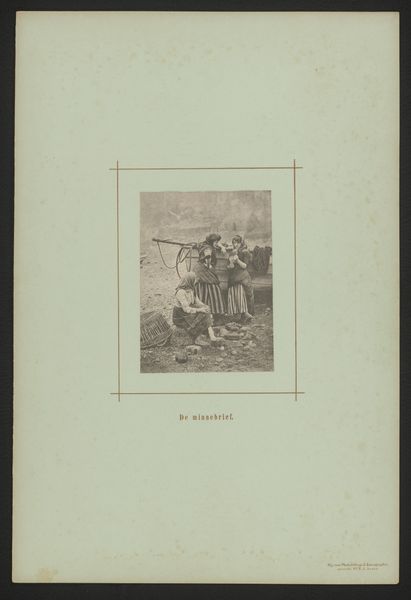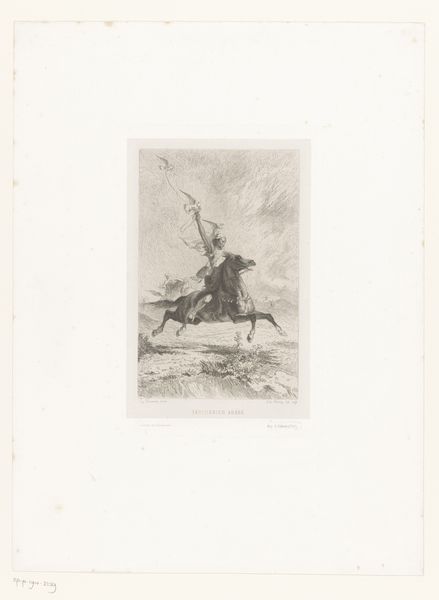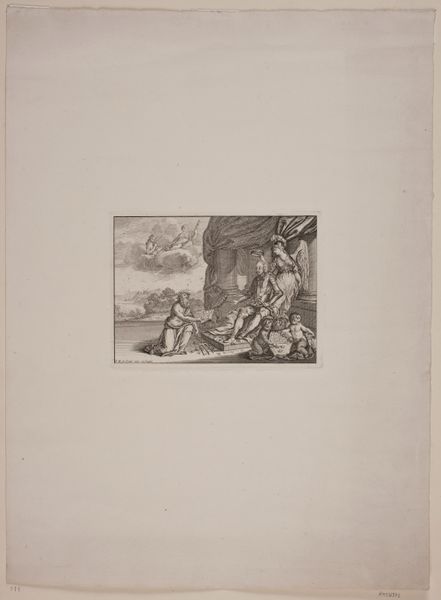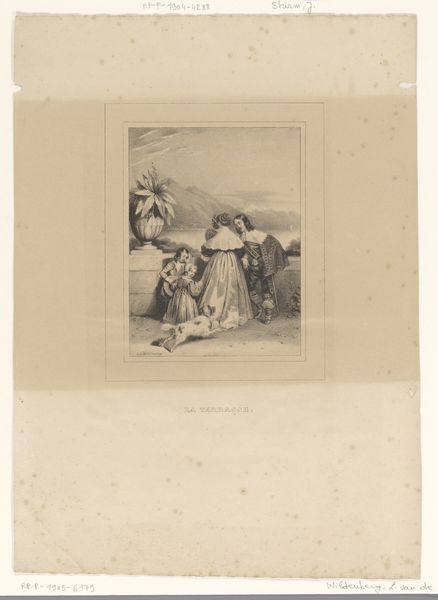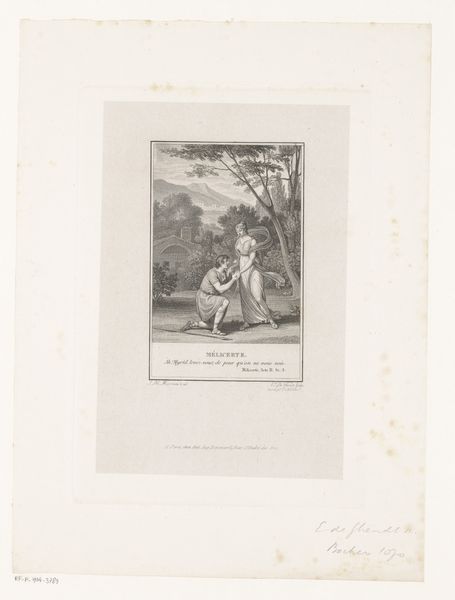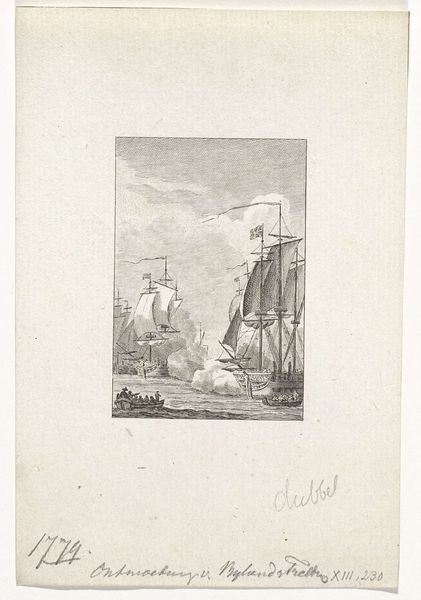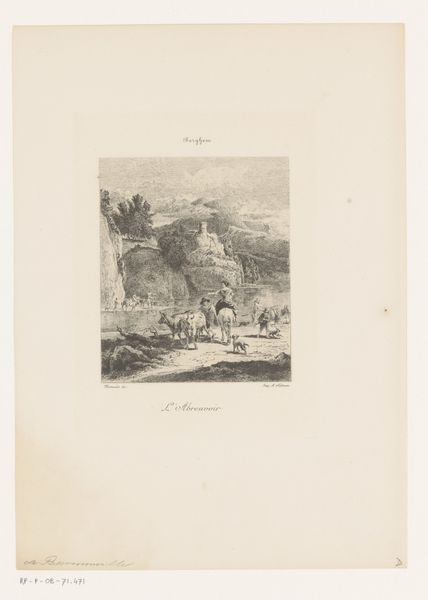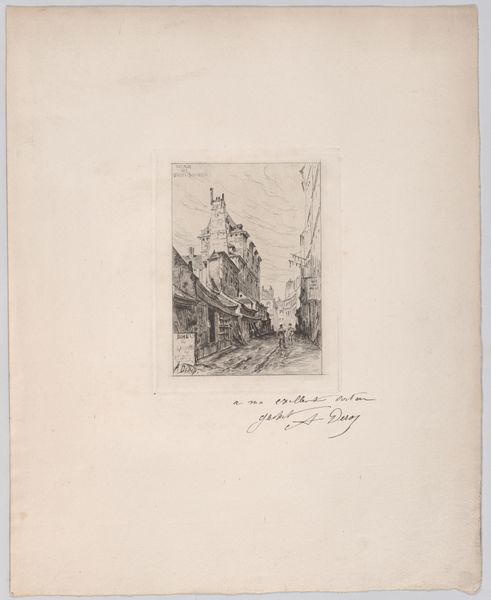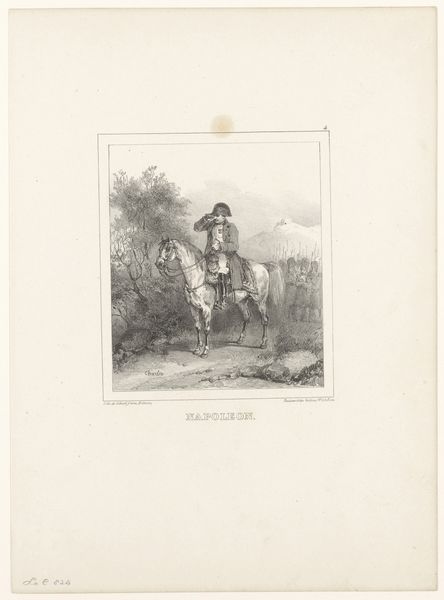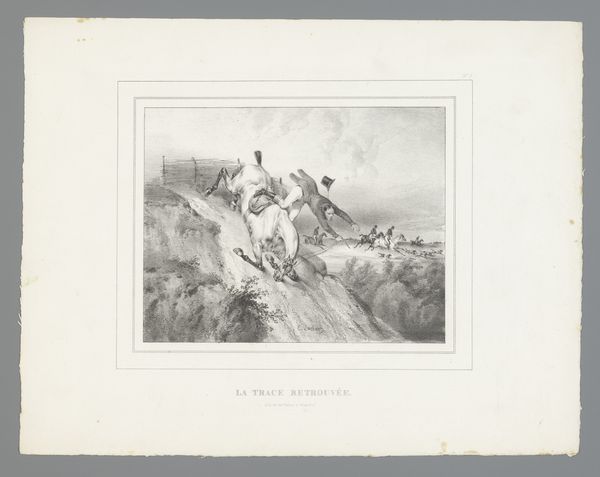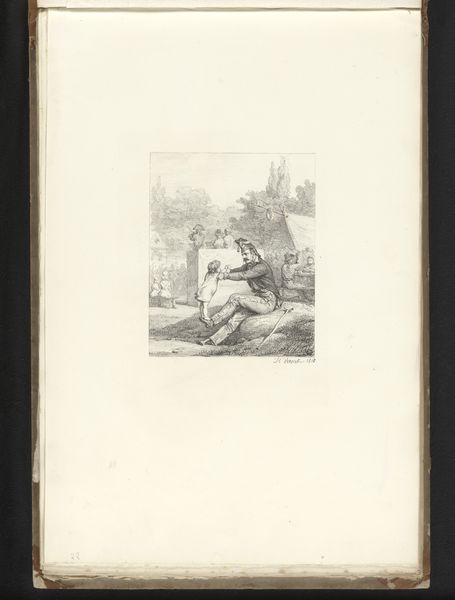
print, etching
#
portrait
#
narrative-art
# print
#
etching
#
pencil sketch
#
old engraving style
#
landscape
#
figuration
#
romanticism
#
genre-painting
#
sea
Dimensions: height 321 mm, width 248 mm
Copyright: Rijks Museum: Open Domain
Curator: This is François Grenier’s "Old Fisherman with Lute by the Water," created sometime between 1831 and 1846. It resides here at the Rijksmuseum. Editor: It’s evocative; I'm immediately drawn to the somber mood. The composition leads your eye right to the lone fisherman sitting so close to the water’s edge, seemingly lost in thought, clutching the lute. Curator: The etching technique employed to make the print—the network of delicate, interconnected lines—really emphasizes the play of light and shadow on the old man’s face and figure. Notice how Grenier skillfully depicts the fisherman's worn clothing, suggesting both his social class and the laborious aspect of his existence, so deeply intertwined with the materiality of the sea. Editor: Absolutely. And the lute, contrasted with the rough sea, feels symbolically loaded. It could represent a yearning for beauty and refinement amid hardship, or perhaps a lament for times gone by. Instruments often stood for status, here though, that’s contradicted. Curator: The choice to use etching as a printmaking medium further democratizes the image. By making it reproducible, the narrative, with its implied social commentary, could reach a wider audience and offer potential viewers from varied backgrounds an engagement with both art and labor. Editor: Indeed, one could argue the work subtly challenges established social hierarchies, presenting this common man not merely as a subject of curiosity but as an emblem of the human spirit, resilient amidst life's challenges. The sea often symbolizes the unconscious; it's easy to project onto. Curator: Considering the period of creation, we might also consider how the consumption of images like these spoke to a developing cultural market keen to explore the "authentic" lives of ordinary people. It suggests changing patterns in art patronage, moving beyond religious and aristocratic circles towards bourgeois sensibilities. Editor: I like that framing of it, understanding the commercial and audience shift. It casts a new light on what the fisherman and the lute really represent: it’s the melancholic symbolism for a culture and economy on the cusp of dramatic transformation. Thank you. Curator: It's fascinating how different perspectives bring nuance to such works, isn’t it?
Comments
No comments
Be the first to comment and join the conversation on the ultimate creative platform.
